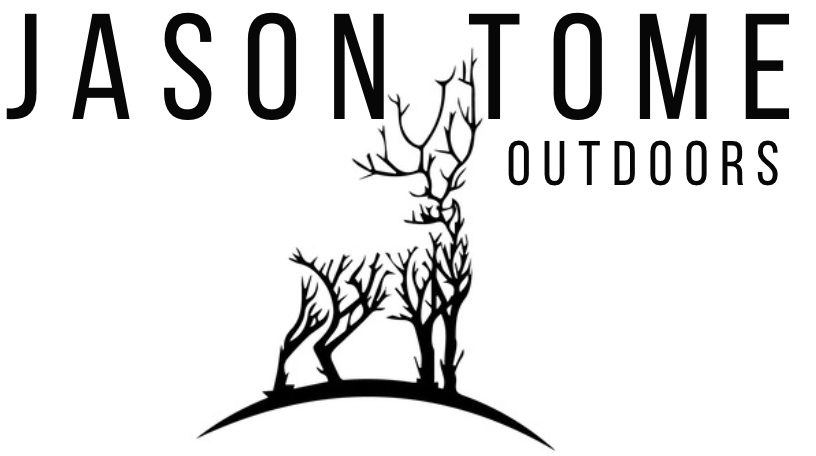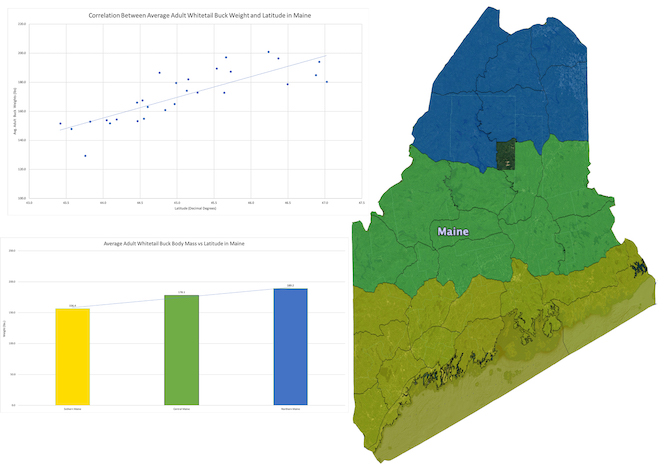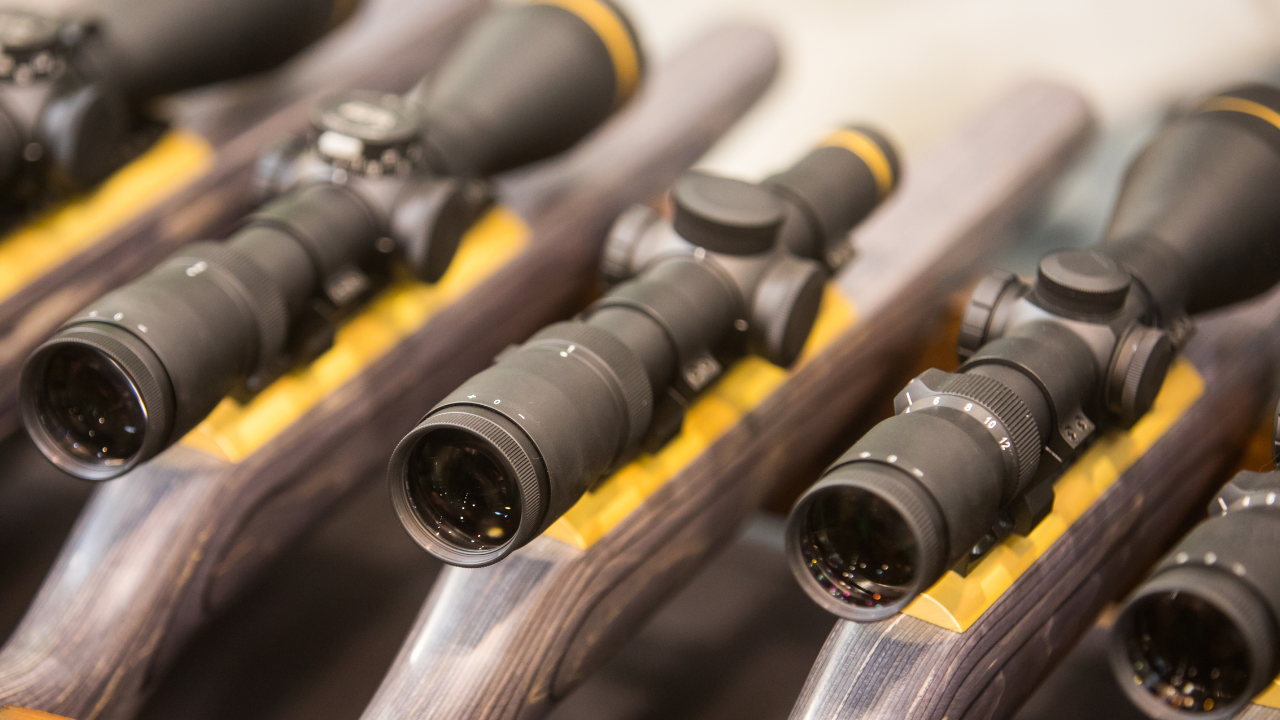It’s difficult to get into the biggest bucks in Maine club by shooting a buck over 200 lbs if you don’t know where to find big Maine bucks. In this article, I will teach you how to position yourself in areas with the highest probability of taking a big-bodied buck. I use science and numbers to explain where to find big Maine bucks.
A 200 lbs caliber buck is a regarded accomplishment for Maine deer hunters because they aren’t super common. Shooting a buck of this weight places you in the biggest bucks in Maine club. The bucks of this caliber are old, smart, and cagey, making them veterans of survival and difficult to kill. You can greatly improve your odds of shooting the biggest bucks Maine has to offer by understanding a few key concepts about body weight and temperature. These concepts are described in more detail below.
Table of Contents
Where To Find Big Maine Bucks
Body size changes in order to attain appropriate thermal regulation based on the climate a particular animal (deer in this case) are living in. This concept is explained by Bergmann’s rule and Allen’s Rule.
Bergmann’s Rule
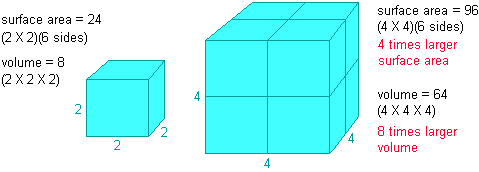
Bergmann’s rule states that species found in higher latitudes will have a larger body size in order to survive colder temperatures that coincide with higher latitudes. This is an evolutionary process that allows species to keep appropriate internal body temperatures in relation to external environmental temperatures.
Larger body sizes are able to withstand colder temperatures because they have lower surface area to volume ratios. This is shown in the example above; 24/8=3 whereas 96/64=1.5. Having a lower surface area to volume ratio allows larger animals to retain heat. Below is a graph showing how buck weights change as latitude increases in Maine. This graph was generated from data supplied by Maine Inland Fisheries and Wildlife.
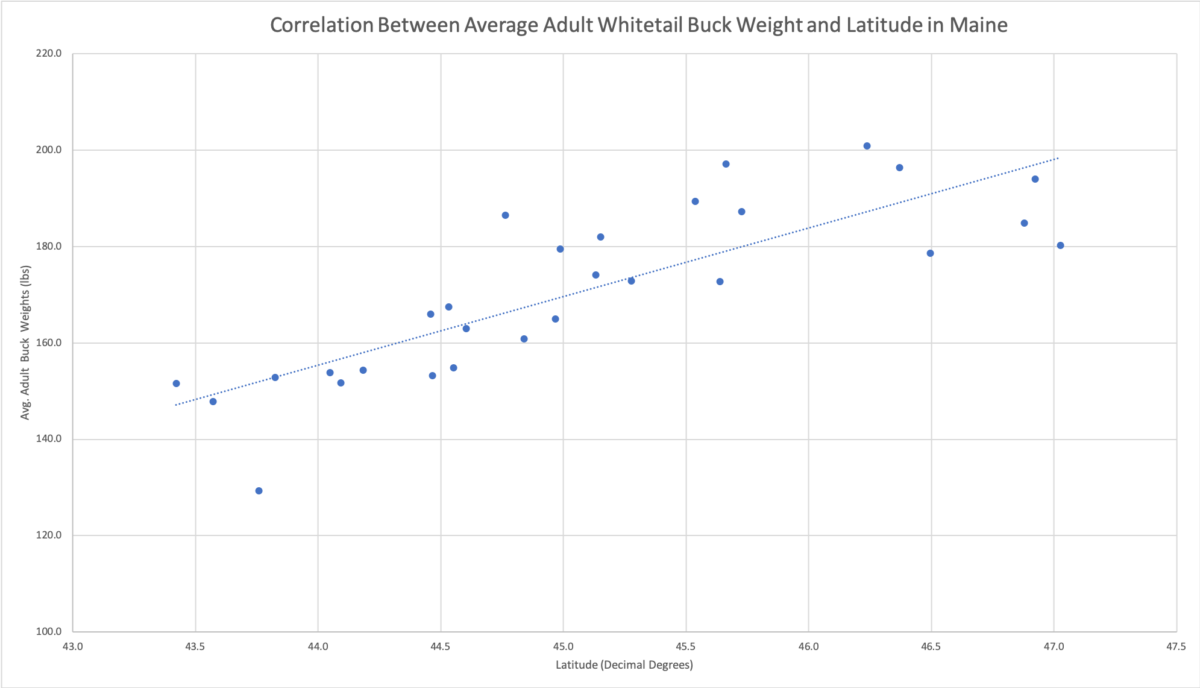
Allen’s Rule
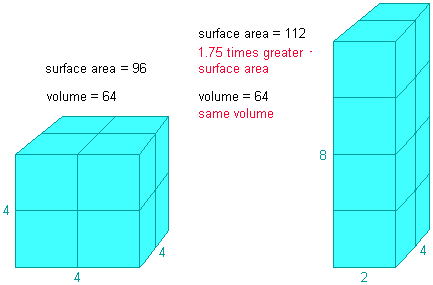
Allen’s rule states that body form or shape is linear (long and skinny) in warm climates and more rounded and compact in cold climates. So, just like Bergmann’s Rule, the main principle is that surface area to volume ratios change depending on the climate.
For example, round forms have smaller surface area to volume ratios than long and skinny thus retaining heat more efficiently. In comparison, an animal that is long and skinning will have more surface area and will dissipate heat easier. An example of this is shown to the right:
Bergmann’s Rule & Allan’s Rule Summary
In summary, these two rules are saying deer body size becomes larger, rounder, and more compact as climates become colder. The further north you hunt in Maine, the colder temperatures will become. For this reason, it is safe to say whitetails will be bigger, stockier, and denser the further north you travel. This means your odds of shooting a buck over the 200 lbs. mark increases as you move north (or more accurately, in the coldest areas of Maine, which is generally north). These first two concepts are the bread and butter of where to find big Maine bucks.
Hunting Pressure
Hunting pressure in southern Maine is much heavier than in the northern woods of Maine. For this reason, big bucks are rarer in the south because they often get shot before they reach 4+ years of age. Additionally, even if you do your homework and find a handful of big bucks to hunt in southern Maine, they still are not necessarily going to weigh over 200 lbs. per the rules described above.
Since hunting pressure in northern Maine is much lower than the pressure that occurs in southern and central Maine it allows more bucks to get 4+ years of age. A buck that has reached this age class will be more likely to weigh 200+ pounds compared to younger bucks. That combined with the genetic tendency for bucks to be larger in the north puts the odds in your favor (Age + Big Deer Genetics = Big Maine Buck). The trade-off being the deer population in the Northwoods is lower. Thus, you’re less likely to see deer.
Habitat & Nutrition
Civilization
Habitat does play a role in how big an animal will grow. In the Northwoods, there is so much land that bucks are able to roam to find all the food they need. However, not all food is created equal. The food in the big woods of Maine, although enough for survival, is not necessarily the most nutritious when compared to crops. Sometimes the bucks that receive the best nutrition will be those who have taken advantage of crops, fields, and other amenities that human civilization offers for deer.
Weight & Antler Growth
You might think that shooting a big Maine buck weighing over 200 lbs will mean that this deer will support a giant rack. However, this is not always the case. Big bucks in the Northwoods get a lot of food from what they can find naturally on the landscape. Although the forage they find is plenty to sustain a big bucks life, it is not as plentiful and nutrient-dense when compared to areas closer to civilization/agriculture.
For this reason, big Northern Maine bucks put all of their energy into bodyweight production in preparation for the cold winters, any leftover energy can be used to generate antler growth. The majority of the time they don’t produce large racks because they don’t have a vast surplus of nutrients. This is especially the case with older bucks because they aren’t able to extract/attain the same amount of nutrients as they did when in their prime.
Bucks found close to agriculture/warmer climates don’t need to put on as much body weight because it’s necessary for optimum survival. On top of that, they have more nutritionally dense diets which allow them to put on weight faster, allowing for more energy toward antler production.
Maine Deer Wintering Areas
Deer wintering areas play a huge role in the number of deer that will be in a given area. This is increasingly so in the Northwoods of Maine. High-quality deer wintering areas have a food source and a tall dense softwood canopy. In addition to a tall canopy, a dense softwood mid-story provides thermal shelter in the cold months. This reduces the amount of snow that reaches the ground. With less snow on the ground deer use less energy moving around when snow conditions are bad.
Large and abundant deer wintering areas allow deer to survive harsh winters. A higher-quality deer wintering area helps reduce energy expenditure. Less energy is needed to acquire shelter and food. With good nutrition and shelter, bucks will enter the growing season with good health. This will enable bucks to allocate more energy on weight gains and antler growth.
By finding and hunting in the general vicinity of high-quality deer wintering areas you will increase the odds of seeing more healthy and mature deer. It’s going to be difficult to find deer, let alone a big buck if you’re hunting in an area with no deer wintering areas in the vacinity.
Big Maine Bucks & Genetics
If you relocated a southern Maine deer into the Northwoods of Maine and it bred with a Northwoods deer, this would cause some genetic contamination. This is true because some offspring would likely be smaller than the average Northwoods deer. This would reduce the odds of offspring survival in colder climates as demonstrated by the rules above. Therefore, genes for smaller deer have been removed through evolution. Since big deer can survive better in the colder temperatures of the north, genes for bigger deer remain in the north.
Having pockets of deer in the Northwoods that are superior to other pockets is unlikely. This is because bucks travel far during the rut to breed does. This creates a lot of genetic mixing, meaning it is unlikely genes are the cause for any particular area to have better potential to hold big bucks. The only aspect genetics allows you to take advantage of is genes for larger bucks will be found in colder climates.
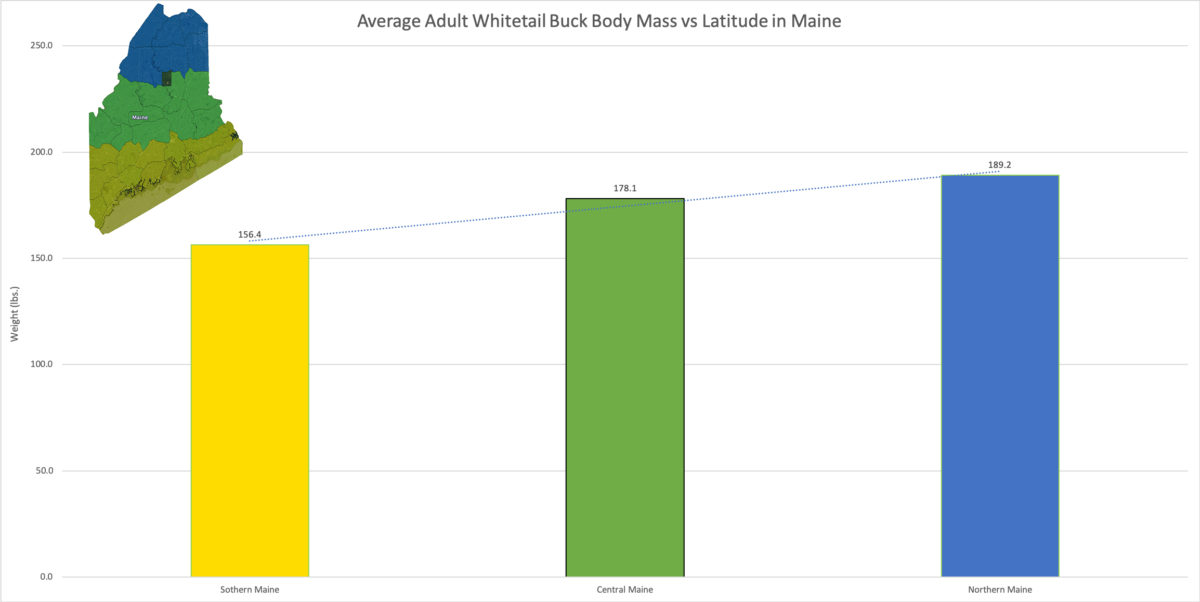
Conclusion
Hopefully, you have a good understanding of where to find big Maine bucks. The takeaway might be to hunt as far north/northwest as you possibly can to increase your odds of shooting the biggest buck possible, right? As far as strictly weight is concerned, you would be correct. However, it’s important to consider the hunt you want to experience.
There are some trade-offs to consider in order to have the best hunt for you.
- How much excitement do you want to have? Is seeing a few deer per week good enough?
- Do you want to be in the middle of nowhere and not see another person? Or do you want to have some comfort knowing other people are around?
- Do you care about antler size? Big Northern Maine bucks often don’t support big racks. More often it’s the deer that are between 180 and 200 lbs. that are in their prime that support the best racks in the Northwoods of Maine.
I believe hunters can find their ‘sweet spot’ in Maine. By ‘sweet spot’ I mean a location in Maine that you’ve taken all aspects of your perfect hunt into consideration. Align yourself by location based on those aspects to put the odds in your favor. This will increase the probability of bringing a successful hunt into reality. This might mean sacrificing some percentage of shooting a 200 pounder so that you can see more deer and smaller bucks to have an enjoyable hunt.
If all you care able is bagging a 200+ pound whopper and you could care less about seeing any other deer, hunting as far north/northwest as possible, while also considering the other points mentioned in this article, will create the highest odds for you.
You Might Like My Other Maine Related Hunting Articles:
When Is The Whitetail Rut In Maine? Detailed Explanation And Rut Dates
Maine Shed Hunting Tips – 30 Best Shed Hunting Tips For Mainers
Maximize Your Deer Tracking Season | Move To The Best Snow Conditions
How to Track Big Woods Bucks in Snow – The Art of Reading Deer Tracks
Looking For More Hunting Information? Or Have Questions? Find Me On:
